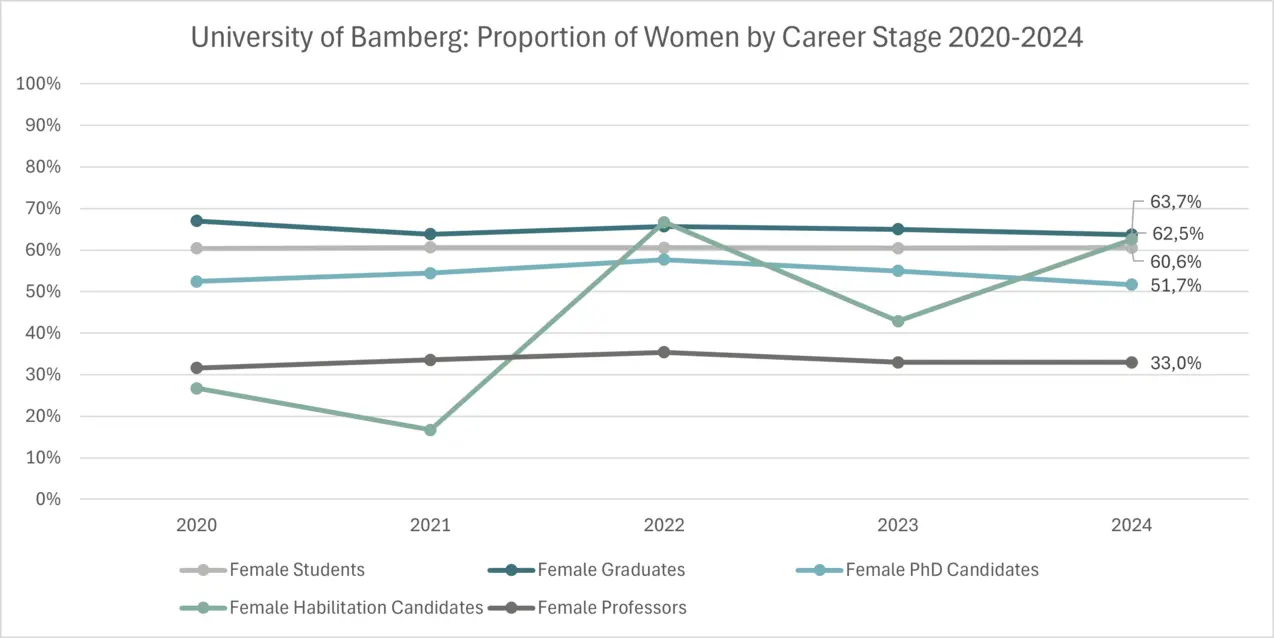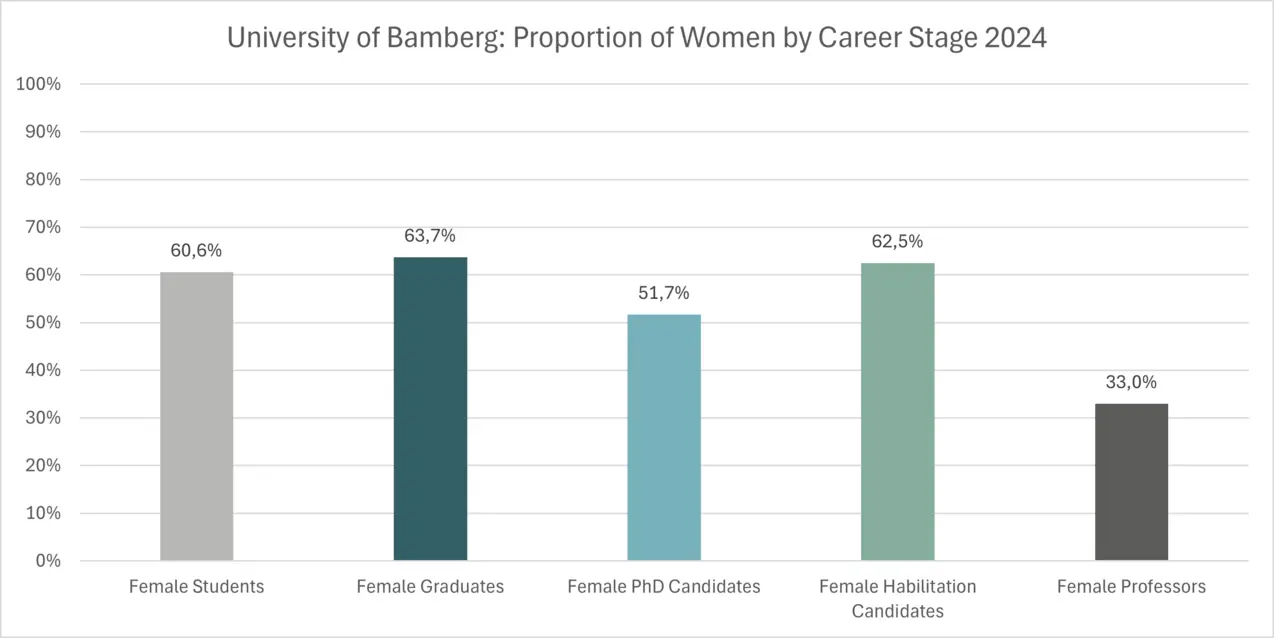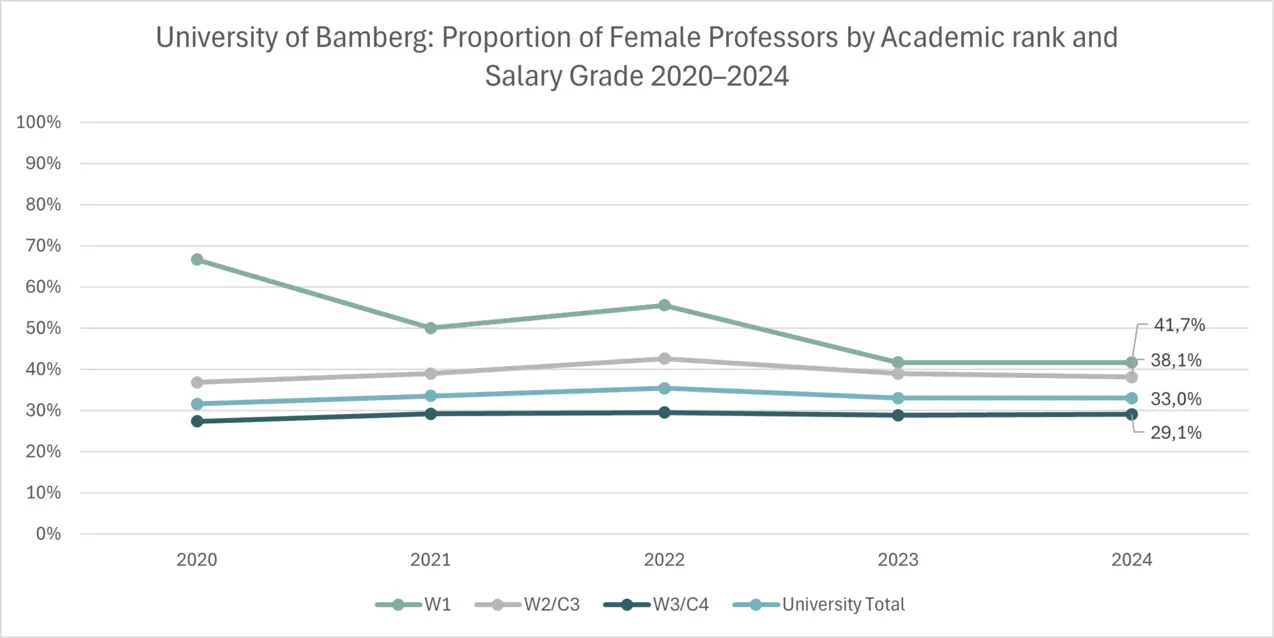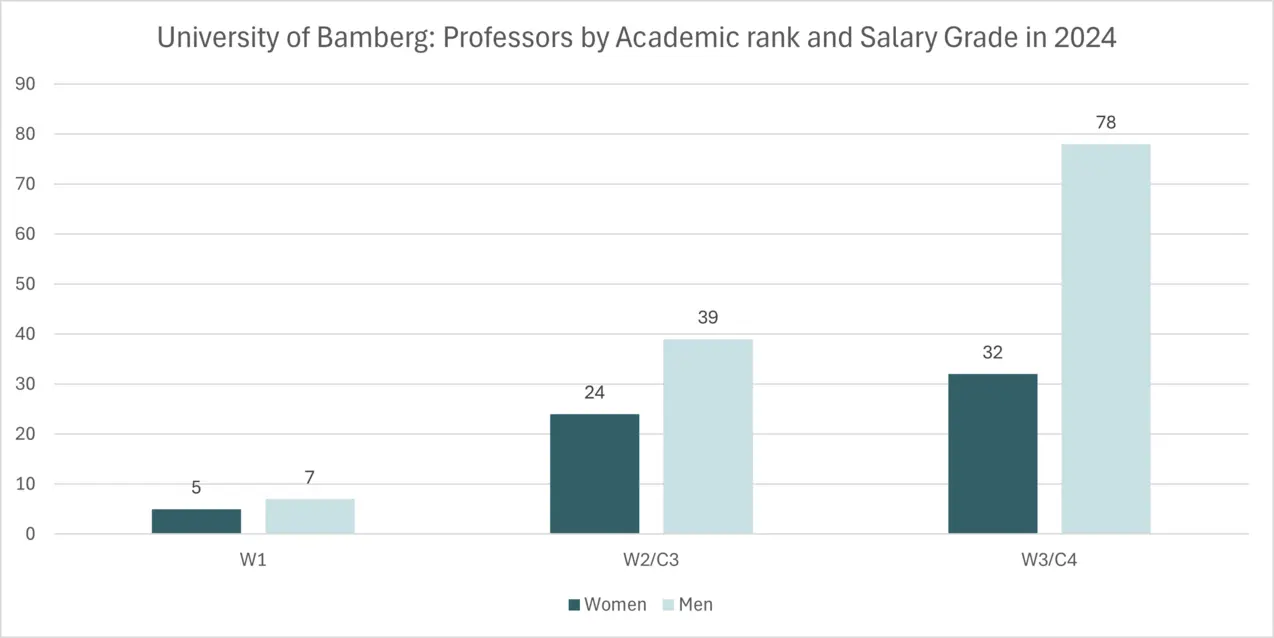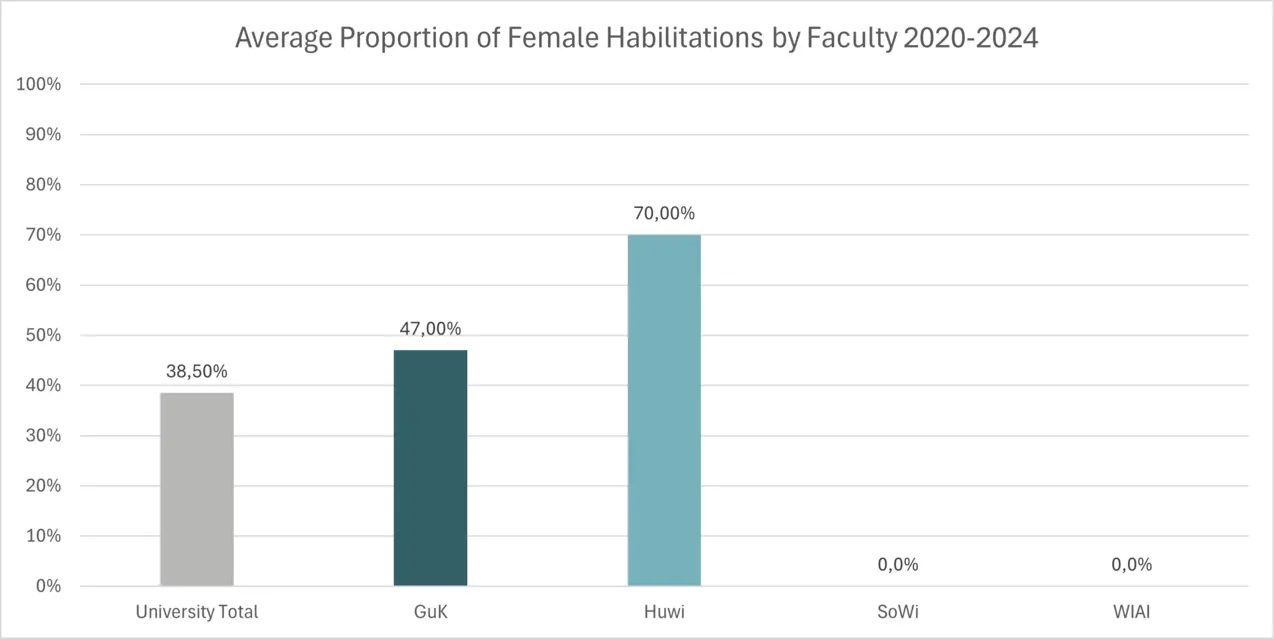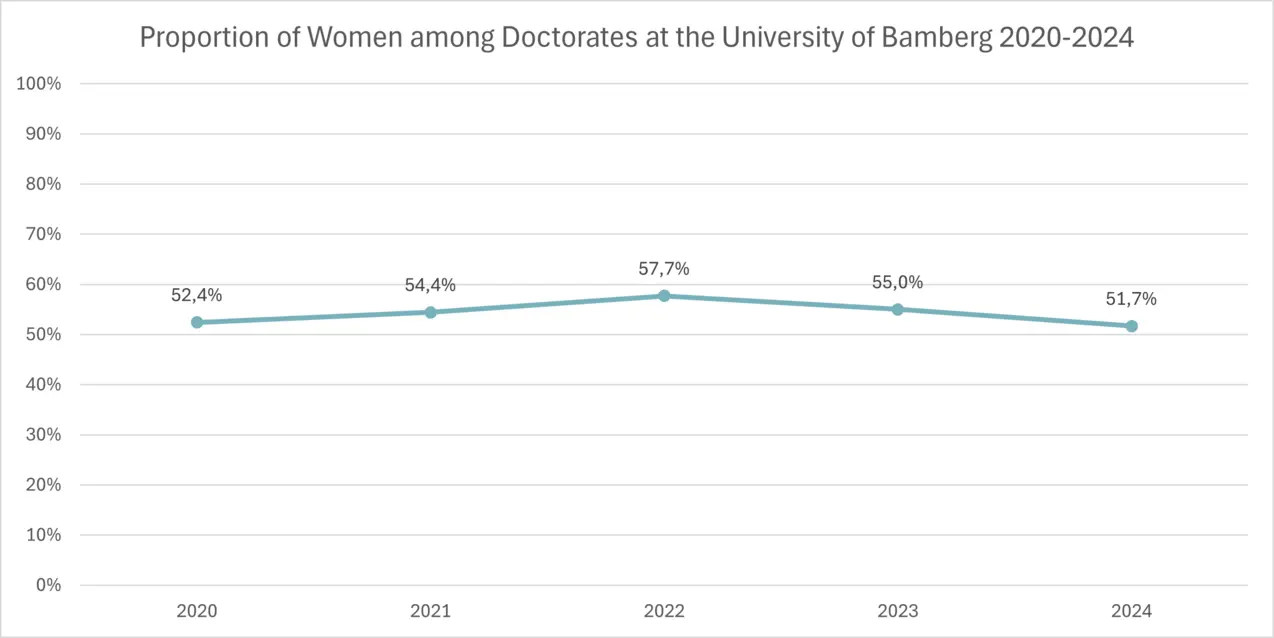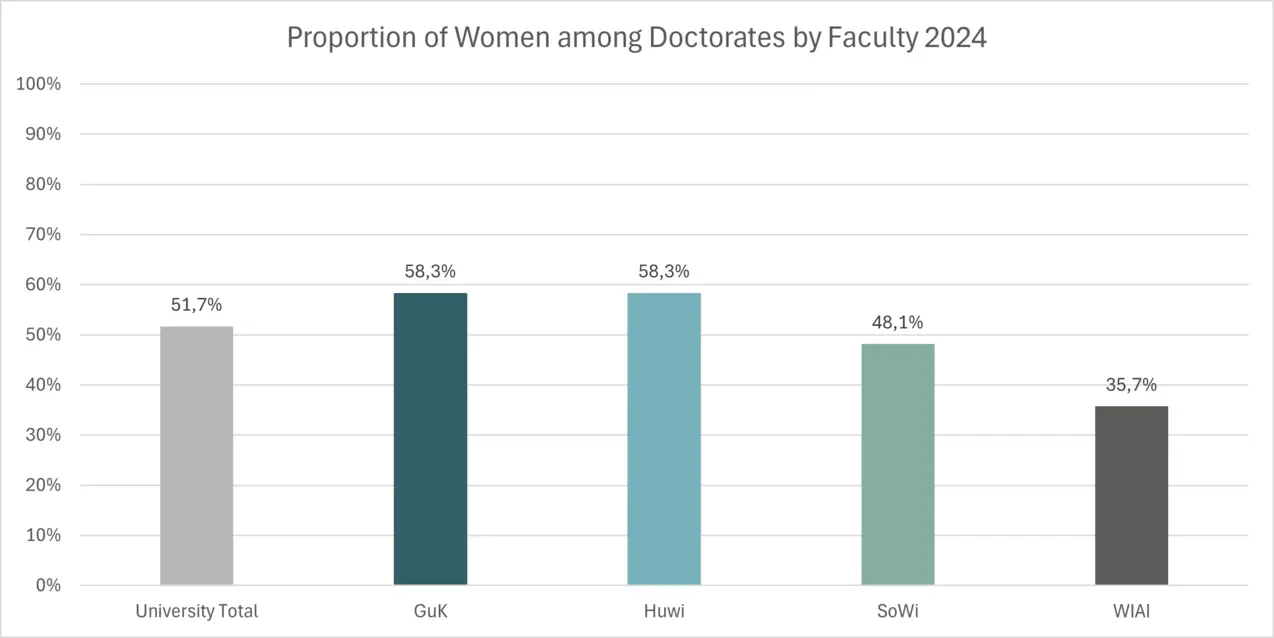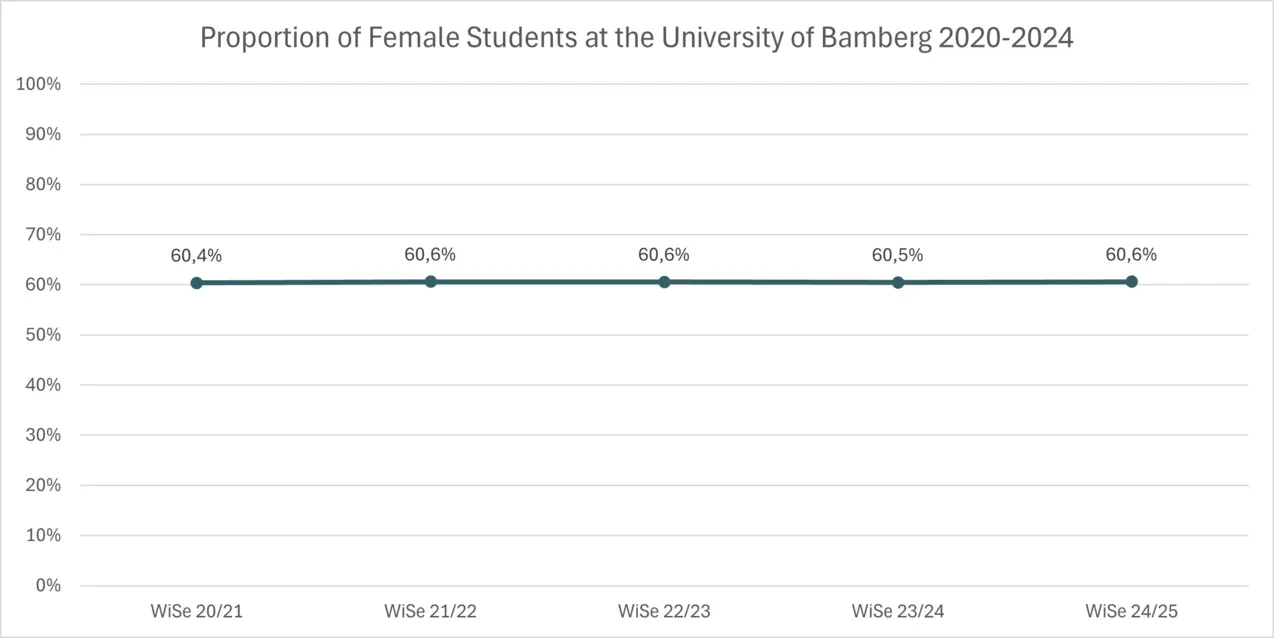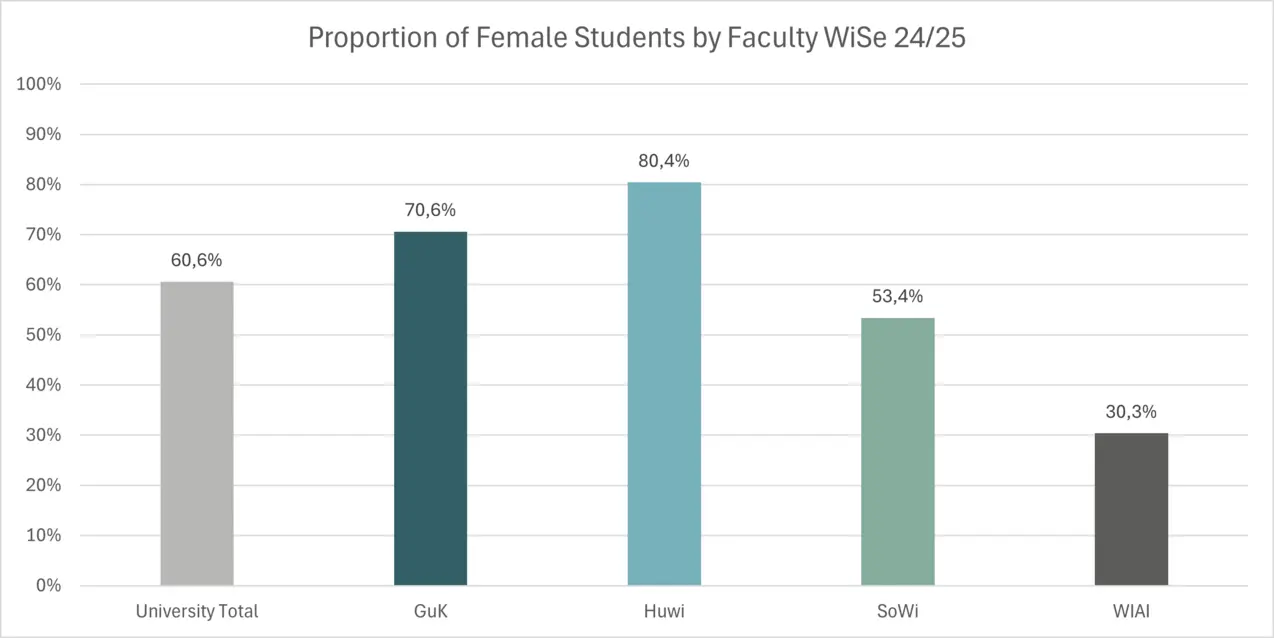Since the early 1990s, the German federal and state governments have been systematically and steadily pursuing the subject of equal opportunities in academics and research. This persistent national movement has not only improved the understanding of the differing situations of women and men in academia, but the considerably increased proportion of women at all levels of academic qualification is evidence of a slow but steady attempt to achieve truly equal opportunity in academics and research.
Gender-Based Equality Statistics about Research and Teaching at the University of Bamberg
Reports by the Women's Representatives
The Academic Equal Opportunity Officers publish a yearly report for the Senate in which important statistics and measures related to equal opportunity at the University of Bamberg are outlined. To access and read the reports (in German) from previous years, please click Deutsch in the top-right corner.
